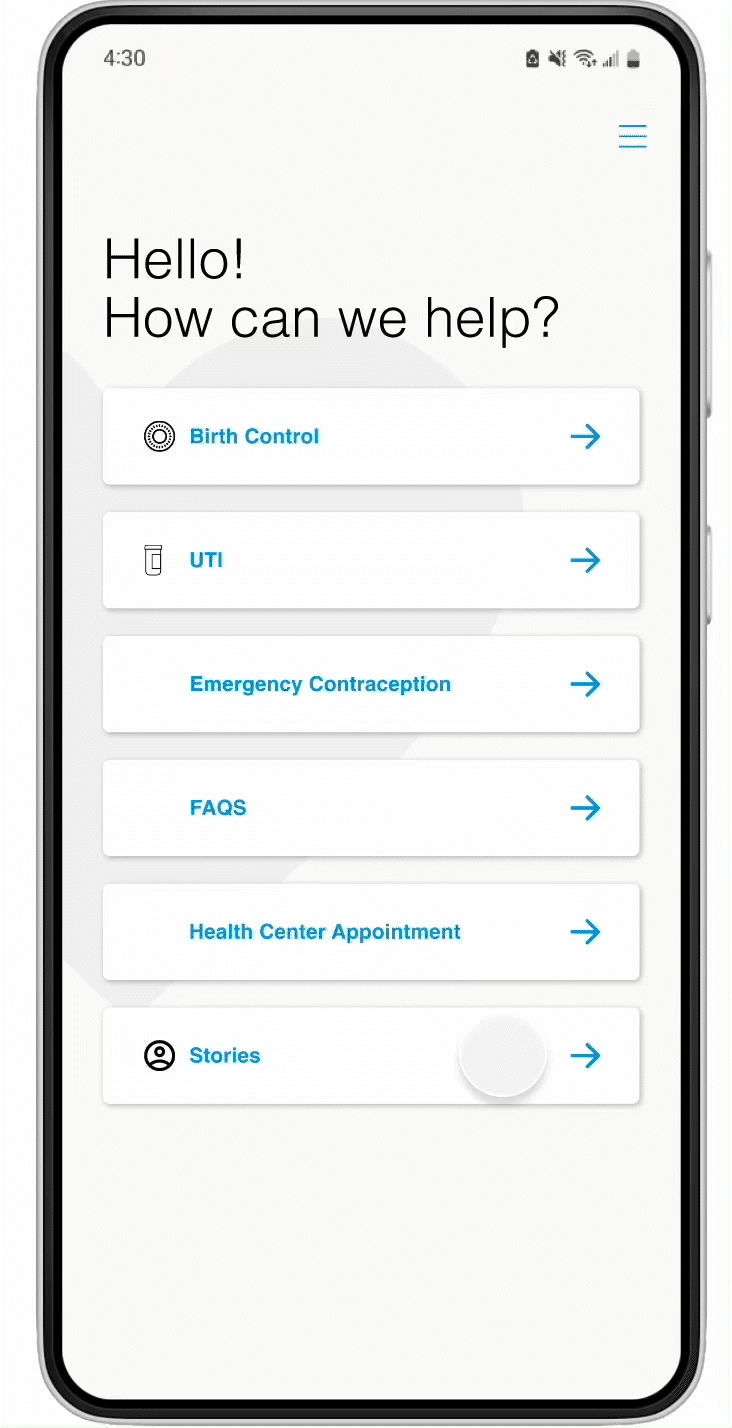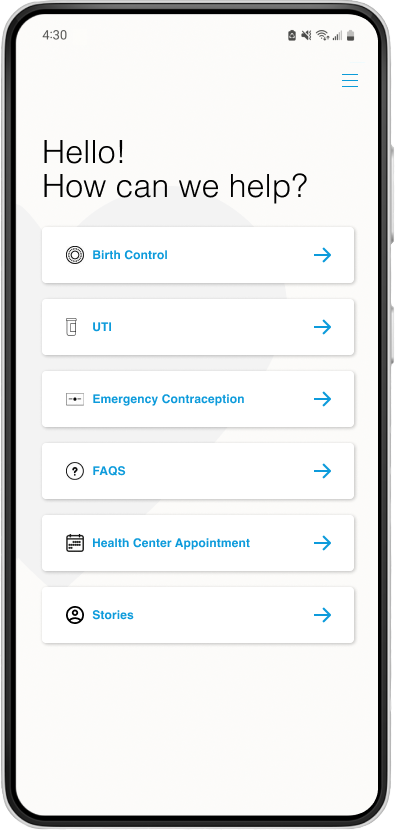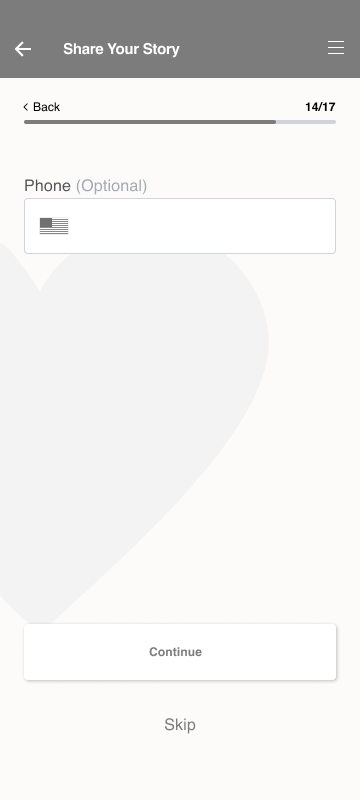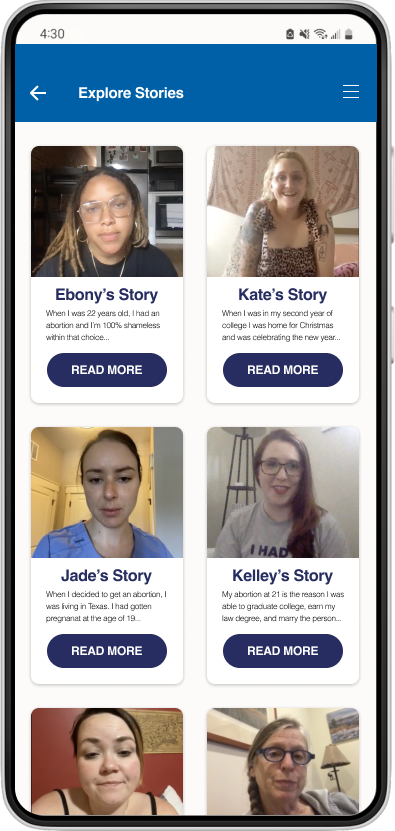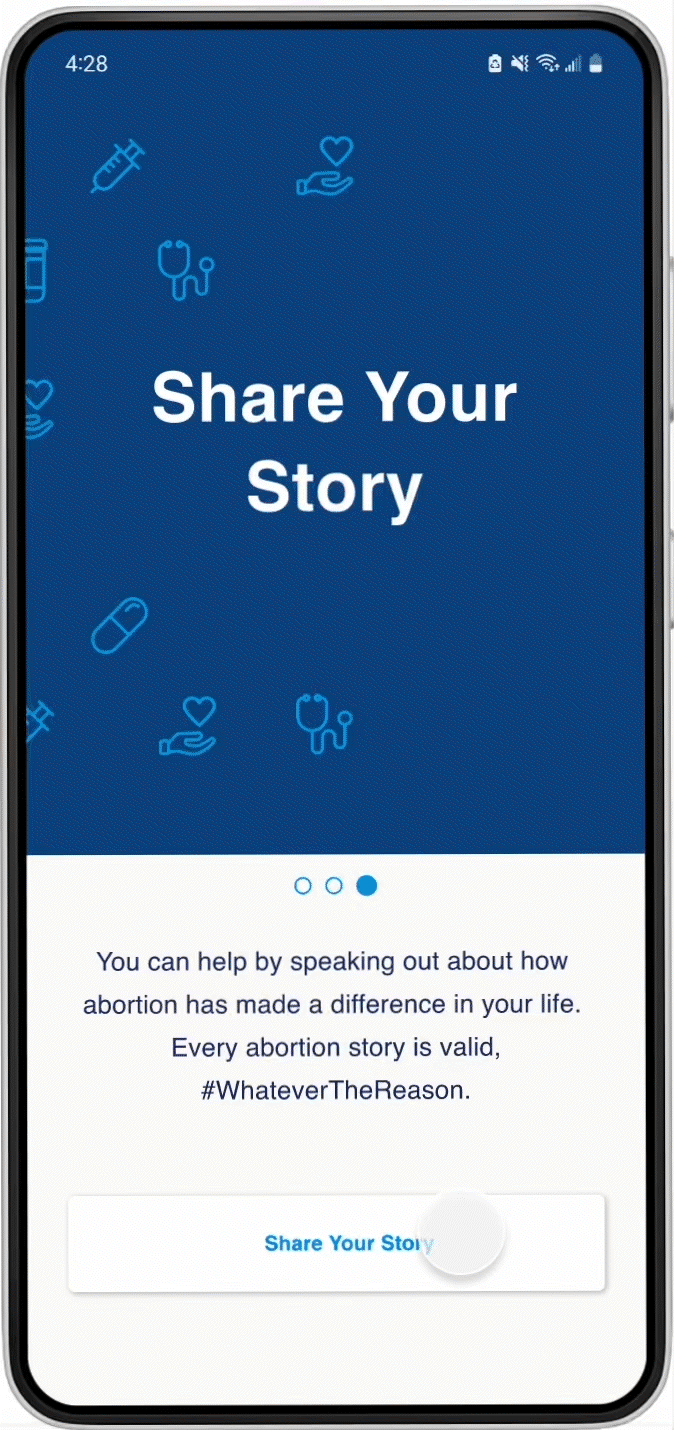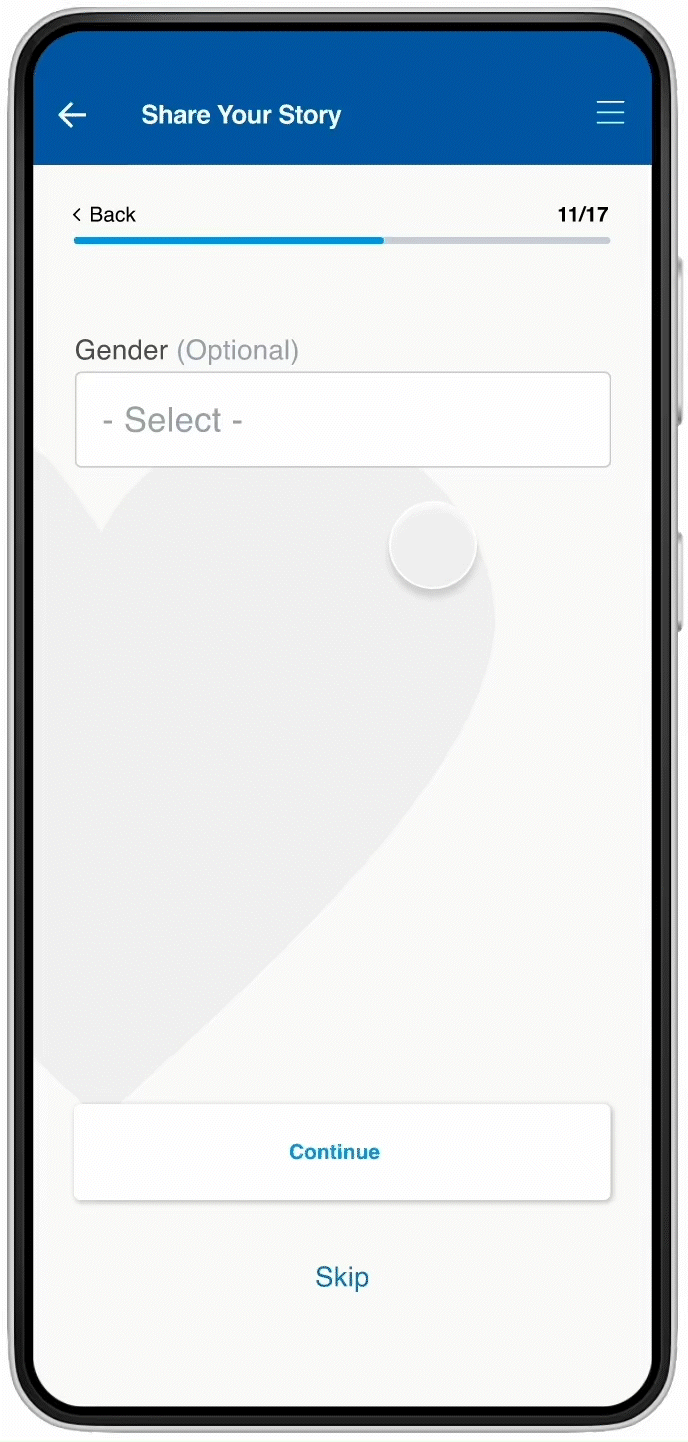
Project Overview
What is this feature?
The Planned Parenthood Direct app is a resource for information and education on sexual and reproductive health.
This added feature allows anyone to share their abortion story in order to nurture compassion and community while de-stigmatizing the topic.
ROLE: UX Designer
PLATFORM: Mobile
TIMEFRAME: January 2022 - March 2022

The Goal
I will design a feature allowing users to share their stories in different formats with the option to remain anonymous while adding important statistical information.
Empathize
How might we make it as easy as possible to share stories since the hard work is in thinking about the story itself?
The Problem
To combat the stigmatization around abortion and promote compassion, people need a way to share their stories with an inclusive, informative community. Many *women have submitted video recordings and written explanations of their abortion stories, but they are difficult to access via the web.
Research on compassion
I wanted to learn more about how compassion might be spread when talking about polarizing topics. I conducted interviews with a group of women 23 - 82 years old.
Data to back this up
Instagram stories = the new way of sharing our lives with one another. Over 500 million people view Instagram stories daily.
70% of consumers want to view positive stories.
People who already use the Planned Parenthood app want to know they are not alone.
Women in this study who did not support abortion themselves had supported a friend who needed an abortion (in part because they knew their friend’s story).
Competitor Analysis
Planned Parenthood’s success in sustaining a compassionate and safe organization for 26 years proves its ability to gather stories in a helpful way to help people know they’re not alone. I wonder if there is a way for users to add details about their abortion stories in a personal but pleasant way?
Interview Results: the need to feel connected and share our experiences
100% of users expressed the desire to share their abortion story AND read about other people’s stories to feel connected with others.
I used my experience as someone who has used Planned Parenthood to empathize with what users might feel while using the app.

Personas & Points of View
A few of my interviews included women who had experienced illegal abortions in the 1960’s. No matter how they viewed abortion itself, I found them compassionate and saddened towards their friends who had experienced dangerous abortions under less than ideal circumstances. They said they would do anything to keep others from experiencing that endangerment.
I spoke with middle-aged women (some who are mothers) who emphasized the desire to provide educational resources to their kids and reduce their shame around sex and their bodies.
I also spoke with many young women who stated, “I don’t always have protected sex because men don’t like wearing condoms.” They were on the look out for every resource to protect them from pregnancy.
Define & Ideate
Sharing stories to make a difference and show why these services matter
I set out to understand how people become more compassionate about stigmatized topics and tested assumptions and hypotheses I had after completing my desk research. Two topics of interest I found were:
Building off this information, I established a task flow.
I also created a sitemap to plan the feature



Testing to understand pain points
Usability Testing
Share your story by recording a video
Or by writing it out to remain anonymous
Usability test: Round 1 Feedback
Users needed to know they could see AND share stories in the same place.
Users wanted to rate the pain level of their abortion BEFORE rating their worst period pain.
To be clear about the steps involved in this feature, users recommended adding a note at the beginning.
To stay completely anonymous, users wanted to know they could use a fake name.
After user testing with a medical professional, I discovered how important dropdowns vs. type fields are for collecting statistical data within an organization.

Design System
I created interactive components to make the design process more efficient.
Final Thoughts
Takeaways
Make it personal
One of my biggest challenges was continuing to make the feature feel personal. My user feedback showed the importance of this- especially when talking about a topic that has become to politicized.
Be consistent
Even though there were many different screens to the feature, users found it much easier to navigate when everything appeared consistent.
Make components for the users AND the company
I discovered how organizations use multiple choice answers to process data (rather than leave an empty field to type in).
Next Steps
Perform round 2 of user testing: measure feature success after launch through user shares, app reviews, and daily posts.

